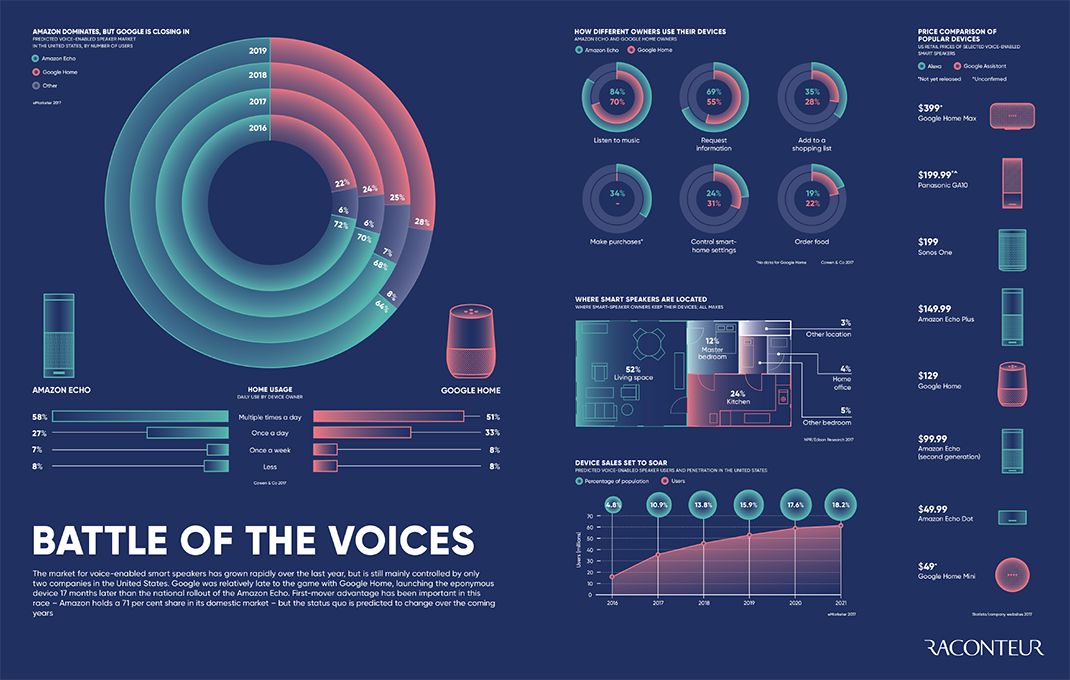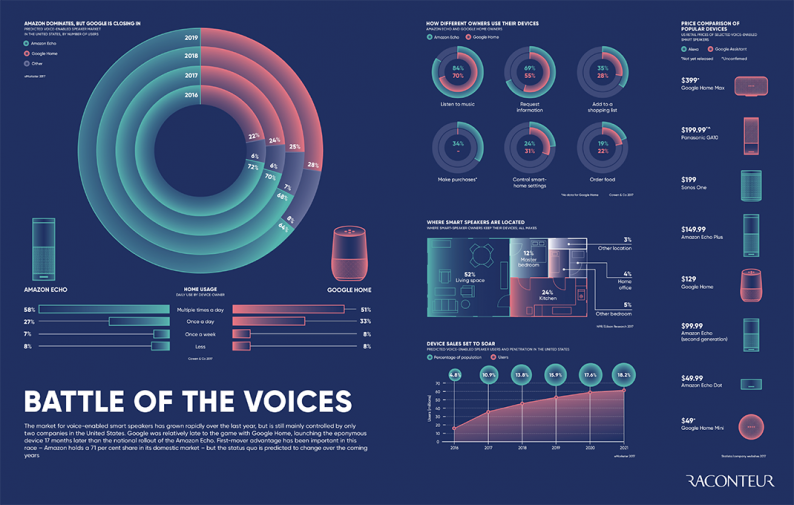
To see the full resolution version of this infographic that has higher legibility, click here.
Steve Rabuchin, the VP of Amazon Alexa, has a vision. He dreams of customers having a conversation – not just with voice-enabled devices like the Amazon Echo, but with appliances, cars, and everything in between.
Though that dream may not be realized in the short term, sales of smart speakers are increasing as people warm up to the idea of using voice-assisted devices in their homes.
Today’s infographic, from Raconteur, sheds light on the fight for smart speaker market share, how early adopters are using the devices and the growing array of voice-enabled devices currently on the market.
MOVING INTO THE MAINSTREAM
When the Amazon Echo entered the market in 2015, it kicked off a new wave of demand for voice-activated smart speakers. At the time, it was unclear whether a large segment of the population would use a smart speaker, but consecutive years of rising sales are putting those worries to rest.
A recent study from Juniper Research found that smart speakers such as Amazon Echo, Google Home, and the Sonos One will be installed in over 70 million U.S. households by 2022, reaching 55% of all homes.
The recent flurry of holiday device buying seems to support this prediction. Smart speaker sales in the U.S. rose sharply to nearly 25 million in 2017, with close to 11 million purchased during the holiday season. Thanks to lower price points and wider distribution, this trend will likely continue through 2018 and beyond.
COMPETITION IS HEATING UP
Amazon’s first-mover advantage resulted in an imposing 94% market share by Q3 2016 – but since then, Google Home has been eating into that lead. Experts predict that Echo will remain the top smart speaker in the future, but that Google and Chinese brands like JD and Xiaomi will continue to grow in popularity.
The two tech giants are fighting hard for the early majority because smart speakers are such a powerful gateway into their ecosystem of services and data collection.














Leave A Comment